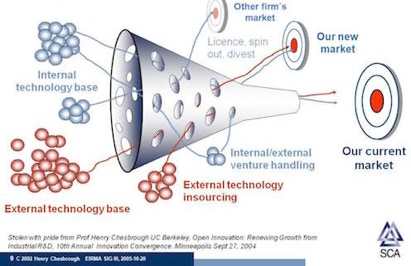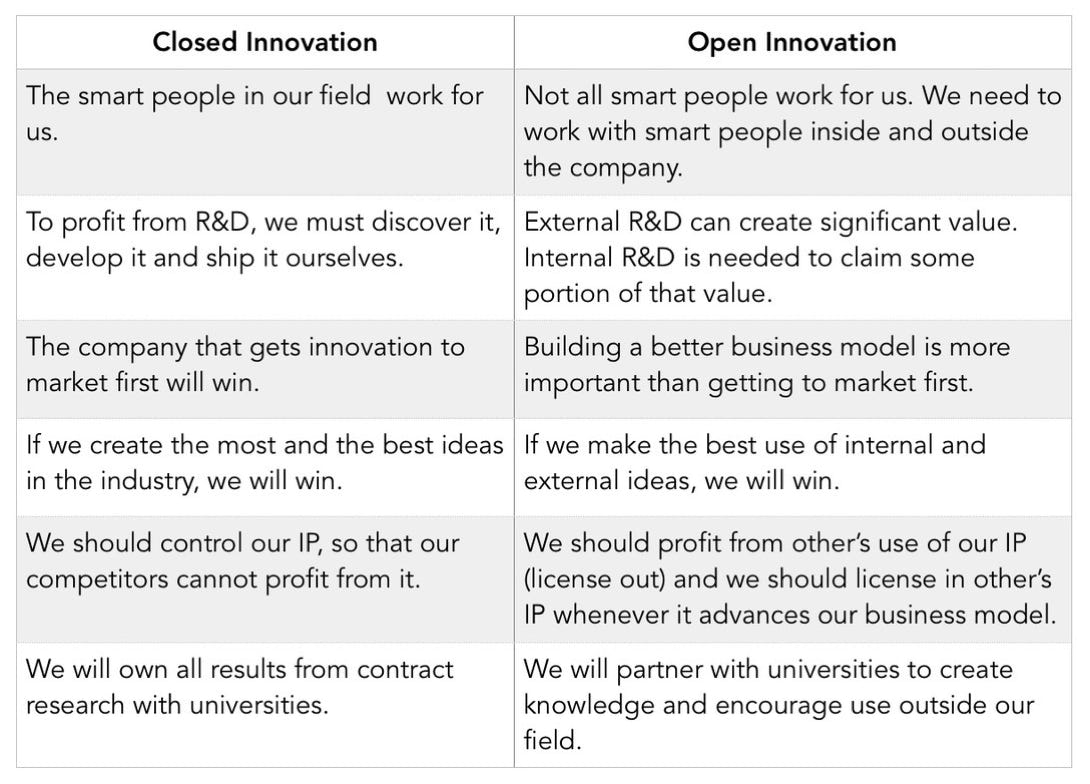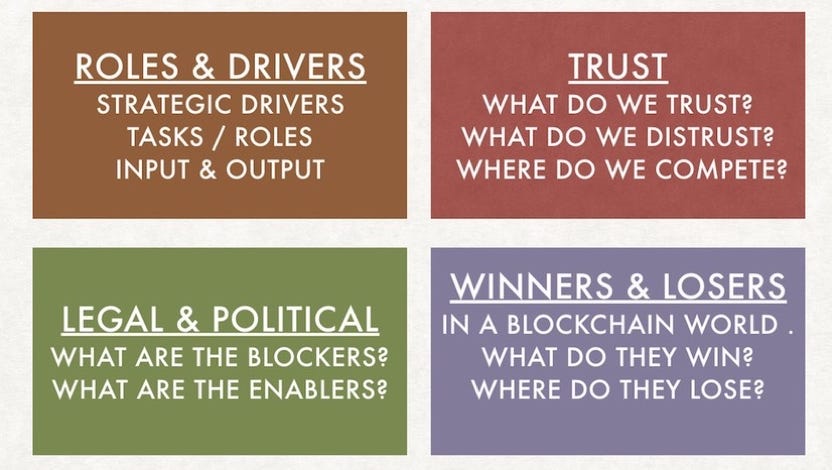Creating a Culture for Open Innovation
The Vonlanthen Group had the foresight to organise a two day summit in Barcelona bringing together delegates from across a wide range of industries to discuss this fascinating topic. I had the honour of delivering a keynote outlining how blockchain can underpin open innovation and then moderate the first day. I offer a few reflections on what I learnt, focusing on the cultural blockers and enablers for Open Innovation.
I first came across Open Innovation around 2005, recognising that the work of Prof. Chesbrough could greatly enhance an organisation’s ability create value by combining their ideas with those from across their network of collaborators as shown in Figure 1.

Figure 1 - The Open Innovation Funnel
Open Innovation runs counter to more tradition (or closed) methods for organisational development as shown in Table 2.

Table 2: Open versus Closed Innovation
Is the technology ready?
I am increasingly convinced that the technical platforms for Open Innovation exist and are not an impediment for an organisation wishing to use the method to transform and grow. These platforms are also not new. The open source software community as an example has embraced remote collaboration tools to structure and coordinate their efforts for many years. Platforms such as IBM Connections or Google G Suite allow organisations to come together and can facilitate Open Innovation initiatives.
As organisations embrace blockchain for business, the increased trust that this emerging technology can offer takes Open Innovation initiatives to the next level. Blockchain allows organisations to come together and implement a common business process with increased levels of trust, controlled transparency and a complete tamper proof audit trail of who’s done (or owned what), when. Informed and appropriate use of blockchain can considerably enhance the levels of trust between organisations committed to Open Innovation as a way of transforming together.
So I would argue the technology IS READY and improving all the time.
Cultural climate
Now for the hard part! The culture needs to be right for Open Innovation to work. The Barcelona summit was excellent at bringing together organisations who were already embracing Open Innovation and getting considerable sustained advantage from so doing with those using more traditional innovation approaches and wishing to change. It thus presented an excellent learning opportunity for all delegates. It also re-enforced my hypothesis that:
(1) Creation of the right cultural climate is an essential pre-requisite for Open Innovation to move from a nice theoretical model to adding real, sustained business value and
(2) Cultural change can only be slow, incremental, very hard to achieve in practice and needs strong leadership.
There are some excellent examples of Open Innovation in action, and these were the focus of case study presentations at the summit. In my keynote, I highlighted the Linux Foundation Hyperledger Project as an exemplar for cross industry Open Innovation in action. The project is building a blockchain fabric - or middleware - essentially the “plumbing” needed for a blockchain solution. The project adopted three key “open” tenants of the Linux Foundation, specifically:
Open Source - the source code developed would be available to all to use, subject only to an open source licence licence agreement
Open Standards - to ensure the eventual interoperability of blockchain solution moving away from the “one (block)chain to rule them all” approach used by some other blockchain fabrics
Open Governance - ensuring the project direction and technical decisions represent the interest of all members. This ensures that the fabric is suited to the needs of all project sponsors, and not optimised for one organisation or a specific industry.
Since it’s formation in December 2015, the Hyperledger Project has been THE fastest growing Linux Foundation initiative with over 150 members now embracing five sub-projects and three tool builds at the time of writing.
It’s interesting to speculate on the cause of this success. Clearly the members have a shared goal of having a blockchain fabric optimised for business and are happy to contribute funds, effort and / or source code to realise their goal and understand the transformational potential that blockchain offers to their organisation. No better driver to generate the right cultural climate for Open Innovation to flourish!
Understanding culture blockers / enablers for Open Innovation
When different organisations come together to embrace Open Innovation to transform, its essential to understand their business drivers and potential inhibitors to the collaboration. The four box model shown in Figure 3 is a useful framework for this analysis.

Figure 3: Four Box Framework
In a facilitated workshop involving all core business network members we need to work through these four fundamental considerations in an open and considerate fashion. Some of these discussions - especially in the “trust” and “winners & losers” categories - will be hard and will require careful and sensitive facilitation BUT are essential to understand then work through the cultural challenges to ensure that Open Innovation can add the most value to organisations wishing to transform.
[http://bit.ly/OICulture]
9 Oct 2017 at 08:01
jpalfreyman@me.com | @JohnP261
